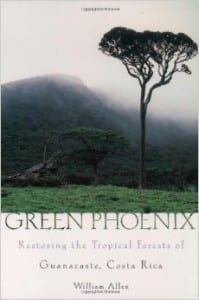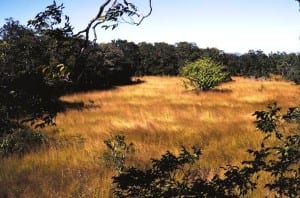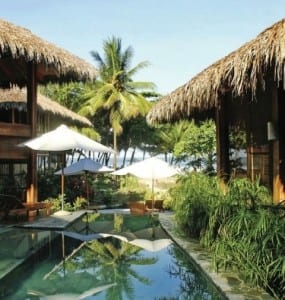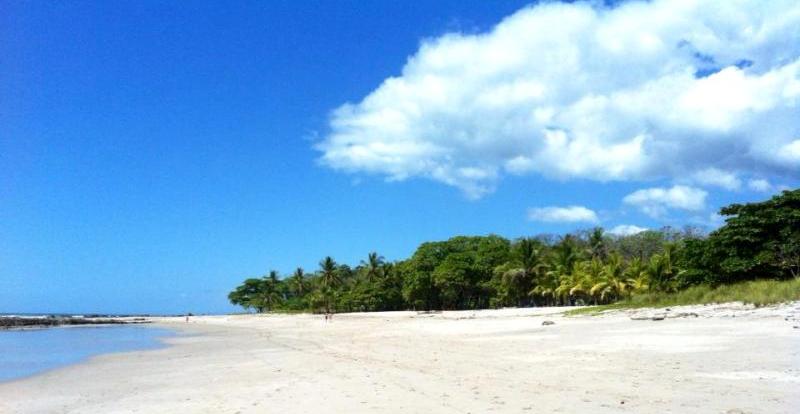Tripatini
the world's smartest travel social network
Exploring Costa Rica’s Tropical Dry Forest - and How It Was Saved
 The northwestern province of Guanacaste in Costa Rica has one of the largest dry tropical forest areas in the Americas. Dry tropical forests are unique with many deciduous broad-leaf trees and vegetation that survive with much less water than a tropical rainforest. It endures a dry season lasting approximately eight months, yet is still home to a splendid diversity of plants, trees and wildlife.
The northwestern province of Guanacaste in Costa Rica has one of the largest dry tropical forest areas in the Americas. Dry tropical forests are unique with many deciduous broad-leaf trees and vegetation that survive with much less water than a tropical rainforest. It endures a dry season lasting approximately eight months, yet is still home to a splendid diversity of plants, trees and wildlife.
The book Green Phoenix: Restoring the Tropical Forests of Guanacaste, Costa Rica, by William Allen (2003), tells the compelling story about how this forest was nearly destroyed and against all odds has been restored to magnificence.
By the 1980s, the Guanacaste forests were nearly erased in order to create pastureland for cattle. Besides cutting the forest, a highly-invasive African grass called Jaragua (Hyparrhenia rufa) was planted to feed the cattle. The highly-flammable grass then invaded local vegetation and became explosive tinder for fires in the dry season. By the time Allen’s gripping environmental story begins, in many places, only a few strands of forest were strung across a charred landscape.
 Despite the widely held belief that tropical forests, once lost, are lost forever, prominent U.S. entomologist and tropical biologist Dr. Daniel Janzen from the University of Pennsylvania, along with his biologist wife Dr. Winnie Hallwachs and Costa Rican volunteers, set out to save the tropical forests of Guanacaste in the 1980s.
Despite the widely held belief that tropical forests, once lost, are lost forever, prominent U.S. entomologist and tropical biologist Dr. Daniel Janzen from the University of Pennsylvania, along with his biologist wife Dr. Winnie Hallwachs and Costa Rican volunteers, set out to save the tropical forests of Guanacaste in the 1980s.
Janzen and the “fathers” of the Costa Rica National Parks System, Mario Boza and Alvaro Ugalde, along with former Costa Rican President Oscar Arias and U.S. contributorslike The Nature Conservancy and the World Wildlife Fund, bought huge ranches at reduced prices to create the Guanacaste Conservation Area and massively expand the Santa Rosa National Park. Beginning with only 39 square miles, by the year 2000, they had pieced together 463 square miles of land and another 290 square miles of marine area.
Today, the Guanacaste Conservation Area is a fabulously rich landscape of dry forest, cloud forest, and rainforest that gives life to approximately 235,000 species of plants and animals. The Guanacaste Dry Forest Conservation Fund (GDFCF) aids with the development, protection and sustainability of the Guanacaste Conservation Area (ACG).
Allen’s inspiring book recounts with vivid power the story of one of the greatest environmental successes of modern times of how extensive devastation can be halted and reversed.
Discover the uniqueness of the Costa Rica tropical dry forest
 In Santa Teresa, Costa Rica, you can see beautiful tropical dry forest and also transitional rainforest. Located on the southern Costa Rica Nicoya Peninsula below the Guanacaste Province, Santa Teresa is known for its beautiful beaches, world-class surf and spectacular sunsets.
In Santa Teresa, Costa Rica, you can see beautiful tropical dry forest and also transitional rainforest. Located on the southern Costa Rica Nicoya Peninsula below the Guanacaste Province, Santa Teresa is known for its beautiful beaches, world-class surf and spectacular sunsets.
The Costa Rica beach resort Pranamar Oceanfront Villas & Yoga Retreat looks out to the blue Pacific Ocean, palm trees and white sand of Santa Teresa Beach. Stay in elaborate Bali-style oceanfront villas and bungalows amid tropical gardens by a gorgeous river-theme swimming pool. The beachfront Santa Teresa hotel offers daily yoga classes, international yoga retreats, and Costa Rica surf holidays.
Article by Shannon Farley
Videos
Groups
-
India
173 members
-
Tour Operators
873 members
-
Ireland
93 members
-
South Dakota
17 members
-
Azerbaijan
17 members
-
Shopping the World
55 members
-
Tech for Travel/Hospital…
87 members
-
Andorra
26 members
-
Online Corner
75 members
-
Minnesota
22 members
-
Backpackers & Hostels
84 members
-
Portugal
60 members
-
Turks and Caicos
26 members
-
Agritourism/Farmstays
72 members
-
Zambia
21 members
© 2025 Created by EnLinea Media.
Powered by
![]()
Badges | Report an Issue | Privacy Policy | Terms of Service

You need to be a member of Tripatini to add comments!
Join Tripatini